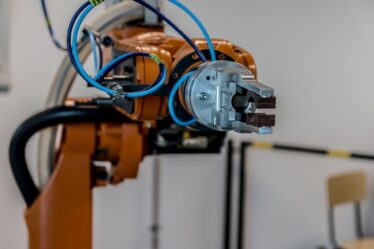
Gunsmithing is one of the crafts with the greatest historical relevance and timeless appeal among all crafts. The art of crafting firearms is a testament to human ingenuity, precision engineering, and artistic expression. From the early days of handcrafted muskets to the modern era of precision rifles and customized handguns, gunsmithing has evolved into a multifaceted practice that blends tradition with innovation.
1. The Historical Roots Of Gunsmithing
To understand the essence of gunsmithing, one must delve into its rich historical roots. This craft has its roots in ancient civilizations when knowledgeable craftspeople made crude weapons by hand. Over the centuries, advancements in metallurgy, machining, and ballistics transformed gunsmithing into a respected profession.
In medieval Europe, the proliferation of firearms revolutionized warfare and hunting, leading to increased demand for skilled gunsmiths. These craftsmen meticulously crafted matchlock, wheellock, and flintlock firearms, each piece a testament to their expertise and dedication to the craft. In exploring the rich tradition and modern innovations of gunsmithing, enthusiasts can find valuable resources and training programs on websites such as https://americangunsmithinginstitute.net, offering insight into the techniques and expertise required to master this timeless craft.
2. The Evolution Of Techniques And Technology
As firearms technology advanced, so too did the techniques employed by gunsmiths. The transition from muzzleloaders to breechloaders, and later to cartridge-based firearms, required innovative approaches to design and manufacturing.
The gunsmithing industry saw tremendous transformations as a result of the Industrial Revolution’s widespread manufacture of firearms. While traditional craftsmanship remained integral, machine tools and assembly-line production methods became commonplace in firearms manufacturing.
In the modern era, computer-aided design (CAD) and CNC machining have revolutionized gunsmithing, enabling greater precision and efficiency in the production of firearms components. However, despite these technological advancements, the artistry and skill of the master gunsmith continue to play a vital role in creating truly exceptional firearms.
3. The Craftsmanship Behind Custom Firearms
One of the hallmarks of gunsmithing is the ability to create custom firearms tailored to the individual preferences and needs of the owner. Whether it’s a precision long-range rifle, a finely engraved shotgun, or a personalized handgun, custom firearms exemplify the pinnacle of craftsmanship and innovation.
Master gunsmiths employ a range of techniques to customize firearms, including precision machining, hand engraving, stock shaping, and metal finishing. Each custom firearm is a unique masterpiece, reflecting the skill and artistry of its creator.
4. The Intersection Of Art And Engineering
Gunsmithing is a discipline that bridges the gap between art and engineering. A beautifully crafted firearm is not only a functional tool but also a work of art that embodies the aesthetic sensibilities of its creator.
From ornate engraving and intricate inlay work to finely checkered stocks and hand-polished metal finishes, every detail of a custom firearm is carefully considered and executed. The seamless fusion of design components that improve the firearm’s performance and aesthetic appeal is a clear example of the marriage of form and function.
5. Preserving Tradition In A Modern World
In an age of mass production and disposable consumer goods, the traditional art of gunsmithing stands as a testament to the value of craftsmanship and heritage. While modern manufacturing techniques have made firearms more accessible than ever before, there remains a deep appreciation for the time-honored skills of the master gunsmith.
Many enthusiasts and collectors seek out custom firearms not only for their superior quality and performance but also for their historical and cultural significance. Whether it’s a faithful reproduction of a classic firearm or a modern interpretation of a timeless design, custom firearms serve as a link to the past while embracing the innovations of the present.
6. The Future Of Gunsmithing
As we look to the future, the art of gunsmithing continues to evolve in response to changing technologies and societal trends. Advances in materials science, 3D printing, and digital manufacturing are shaping the way firearms are designed, produced, and customized.
However, amidst these advancements, the core principles of gunsmithing remain unchanged: precision, craftsmanship, and a commitment to excellence. Whether it’s crafting a bespoke hunting rifle, restoring a vintage firearm, or pushing the boundaries of innovation in firearm design, the timeless art of gunsmithing will continue to captivate and inspire generations to come.
Conclusion
Crafting firearms is more than just a technical skill; it’s a timeless art form that combines tradition, innovation, and craftsmanship. From the ancient forges of yesteryear to the high-tech workshops of today, gunsmithing has remained a symbol of human ingenuity and creativity. As long as there are firearms to be made, the art of gunsmithing will endure, preserving our heritage and shaping the future of firearms technology.


